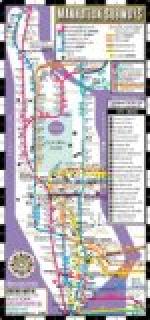The illustration on page 122 is produced from a photograph of the interior of one of the transformer cupboards and shows the transformer in place with the end bell of the high potential cable and the primary switchboard containing switches and enclosed fuses. The illustration on page 123 shows one of the secondary distributing switchboards which are located immediately behind the ticket booths, where they are under the control of the ticket seller.
[Illustration: TRANSFORMER COMPARTMENT IN PASSENGER STATION]
In lighting the subway between passenger stations, it is desirable, on the one hand, to provide sufficient light for track inspection and to permit employees passing along the subway to see their way clearly and avoid obstructions; but, on the other hand, the lighting must not be so brilliant as to interfere with easy sight and recognition of the red, yellow, and green signal lamps of the block signal system. It is necessary also that the lights for general illumination be so placed that their rays shall not fall directly upon the eyes of approaching motormen at the head of trains nor annoy passengers who may be reading their papers inside the cars. The conditions imposed by these considerations are met in the four-track sections of the subway by placing a row of incandescent lamps between the north-bound local and express tracks and a similar row between the southbound local and express tracks. The lamps are carried upon brackets supported upon the iron columns of the subway structure, successive lamps in each row being 60 feet apart. They are located a few inches above the tops of the car windows and with reference to the direction of approaching trains the lamps in each row are carried upon the far side of the iron columns, by which expedient the eyes of the approaching motormen are sufficiently protected against their direct rays.
[Sidenote: Lighting of the Power House]
For the general illumination of the engine room, clusters of Nernst lamps are supported from the roof trusses and a row of single lamps of the same type is carried on the lower gallery about 25 feet from the floor. This is the first power house in America to be illuminated by these lamps. The quality of the light is unsurpassed and the general effect of the illumination most satisfactory and agreeable to the eye. In addition to the Nernst lamps, 16 c. p. incandescent lamps are placed upon the engines and along the galleries in places not conveniently reached by the general illumination. The basement also is lighted by incandescent lamps.
[Illustration: SECONDARY DISTRIBUTING SWITCHBOARD AT PASSENGER STATION]
For the boiler room, a row of Nernst lamps in front of the batteries of boilers is provided, and, in addition to these, incandescent lamps are used in the passageways around the boilers, at gauges and at water columns. The basement of the boiler room, the pump room, the economizer floor, coal bunkers, and coal conveyers are lighted by incandescent lamps, while arc lamps are used around the coal tower and dock. The lights on the engines and those at gauge glasses and water columns and at the pumps are supplied by direct current from the 250-volt circuits. All other incandescent lamps and the Nernst lamps are supplied through transformers from the 60-cycle lighting system.




